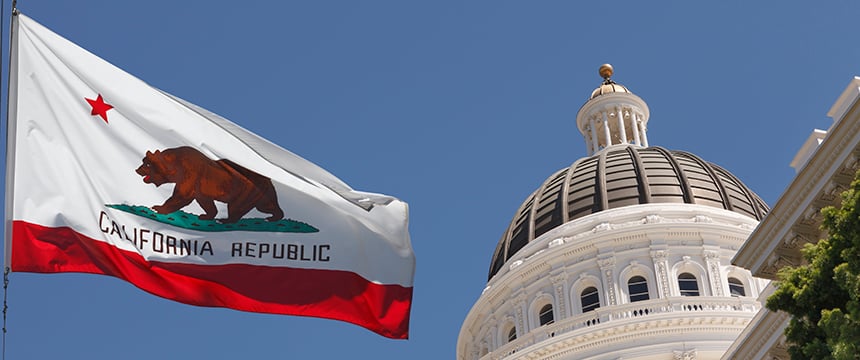Proposed Changes to California Net Metering Tariffs Under Review by CPUC

The Public Utilities Commission of the State of California (“CPUC”) is considering proposed rule changes to the state’s current net energy metering tariff (“NEM 2.0”). In what has been described as a “controversial proposal”, the proposed successor net energy metering tariff (“NEM 3.0”) represents a shift from net metering to net billing. Under the proposed rule, “imports and exports will be calculated based on instantaneous netting of consumption and production and will be trued-up on an annual basis”.
The proposed net billing tariff contains the following elements:
- Export Compensation Rates. Rates would be based on hourly averaged “Avoided Cost Calculator” values, which have been historically used to measure cost-effectiveness (not compensation).
- Market Transition Credits. The proposal would provide the following market transition credits for residential interconnections prior to the end of 2027, decreasing by 25% annually:
- Residential:
- PG&E low-income: $4.36/kW per month for 10 years
- PG&E non-low-income: $1.62/kW per month for 10 years
- SCE low-income: $5.25/kW per month for 10 years
- SCE non-low-income: $3.59/KW for 10 years
- SDG&E: no incentive provided
- Other Customer Classes: no incentive provided
- Residential:
- Highly Differentiated Time-of-Use Rates.
- Grid Participation Charges. Residential customers (excluding low-income customers) would be assessed a new monthly “Grid Participation Charge” of $8/kW of installed solar capacity. Other customer classes would not be assessed this fee.
NEM 3.0 would also make certain retroactive changes to previous tariffs (NEM 1.0 and NEM 2.0). Existing non-low-income residential customers would be required to transition to NEM 3.0 within 15 years of the date of interconnection. All future NEM 2.0 customers, as well as any customers taking control of a residential system, may only remain subject to the net metering rules that applied at the time of their interconnection (referred to as a “legacy period”) for a period of 15 years, instead of the current 20 years afforded by NEM 2.0.
These changes would affect all residential, commercial, industrial and agricultural customers. Residential customers are incentivized to transfer to NEM 3.0 to reap the benefits of the Market Transition Credits described above. Similarly, there are storage incentives to transitioning: existing customers who voluntarily transfer to NEM 3.0 are eligible to receive a storage rebate of $0.20/watt hour (available for 4 years, decreasing by 25% each year).
There has been a strong divide in public reaction to proposed NEM 3.0. The solar industry is strongly opposed, arguing that the proposed rule will make rooftop solar more expensive and will result in fewer solar installations as a result. Industry is also opposed particularly to the retroactive provisions of NEM 3.0. Alternatively, utilities and non-solar ratepayers are in favor, as their view is that NEM 2.0 disproportionally burdens non-solar ratepayers by pushing electricity costs and grid maintenance costs onto those without solar panels (since solar panel owners get paid by the utility at the retail rate for electricity). They also express equity concerns with NEM 2.0, as higher-income residential customers are more likely to have solar installations.
If adopted, we do not expect that the new net metering tariffs would have substantial impact on existing utility scale projects. The retroactive elements described above do not appear to have a significant near-term impact on existing non-residential projects already taking service under current tariffs. However, to the extent financing of existing projects relied on assumptions regarding future net metering revenues after expiration of any current agreements, those assumptions should be revisited. Going forward, the proposal will impact the financial viability of California residential and commercial net metering projects. In particular, the highly differentiated time-of-use rates that would be instituted may have significant impact. Time-of-use rates are more difficult for accurate economic modeling, in particular if continued significant growth in solar drives down daytime rates. However, incentives for the inclusion of storage may help mitigate time-of-use rate impacts for certain projects. Other than the incentives for storage, the proposed changes are consistent with approaches being taken by other non-California utilities, particularly in regulated markets. Utilities argue that previous net metering tariffs were too favorable to customers with solar installations at the expense of non-solar customers.
The proposal, which was originally scheduled for a commission vote on January 27, 2022, has been further delayed as it was not included on the CPUC’s meeting docket of February 10, 2022. When recently asked about the proposal, Governor Newsom responded that “we still have some work to do”.
Foley is committed to helping our clients regarding regulatory matters in the Energy sector, and has a deep presence and expertise in California-law matters. For more information, please contact Tom Mullooly, Jason Barglow, Amanda Soler, Natalie Neals or your Foley attorney.

